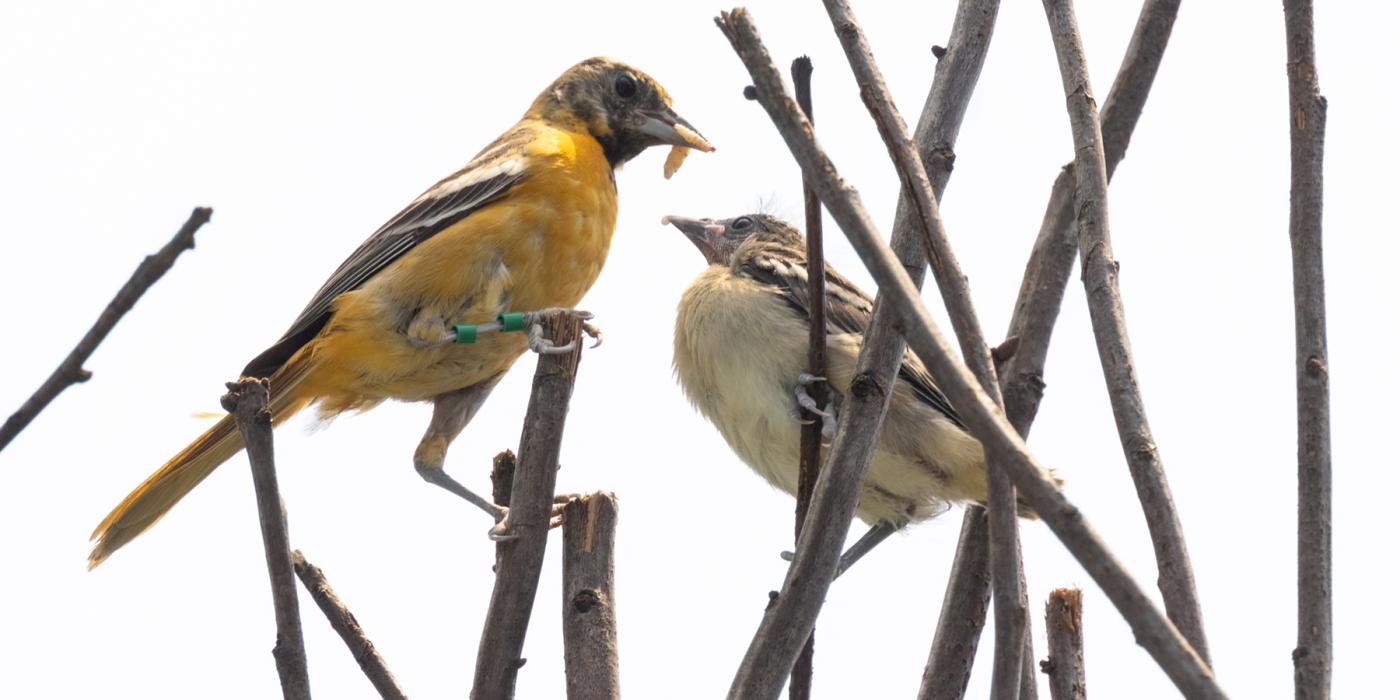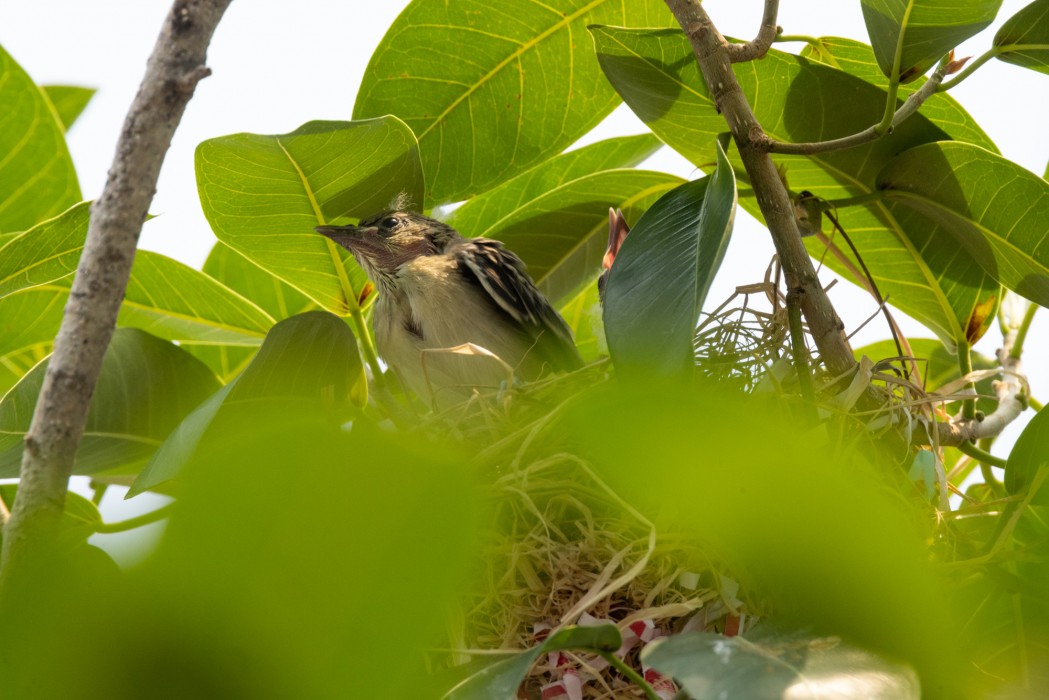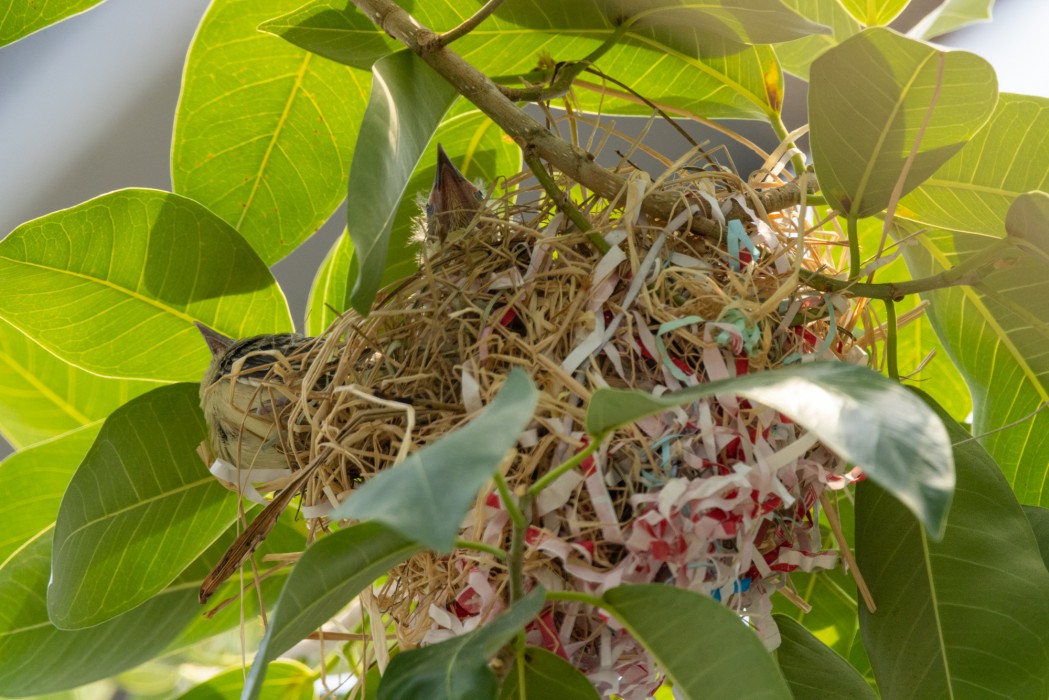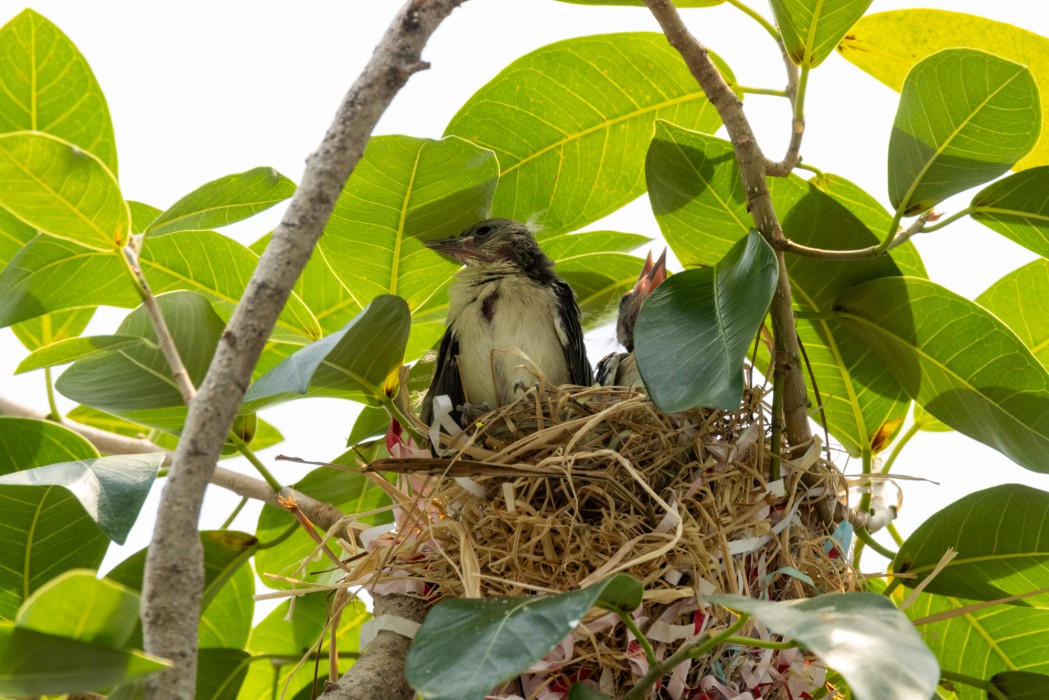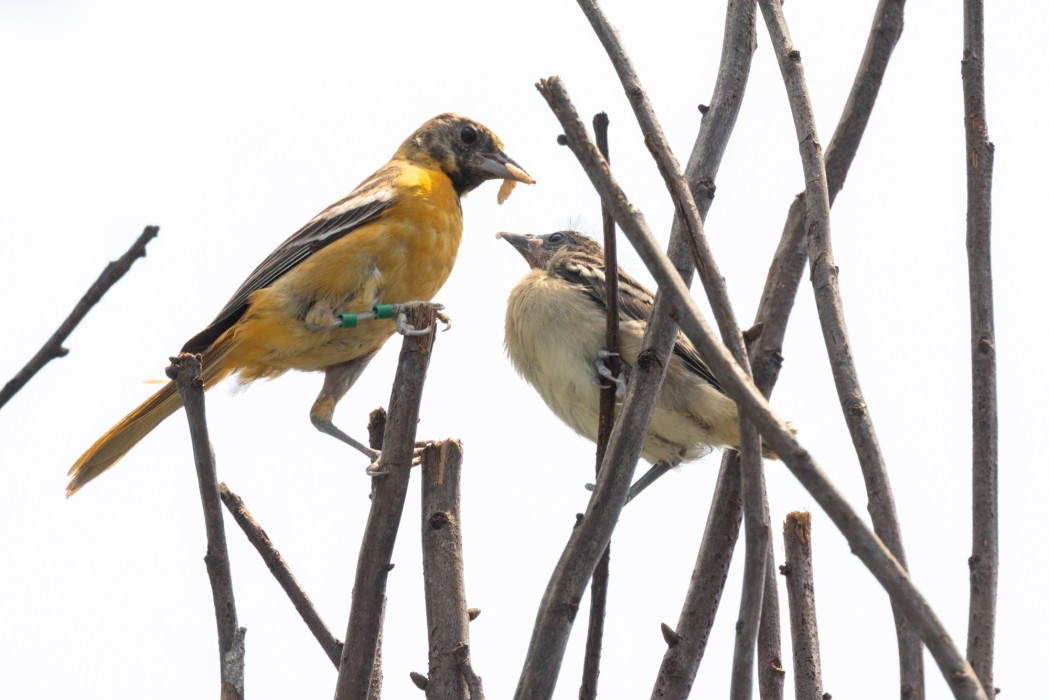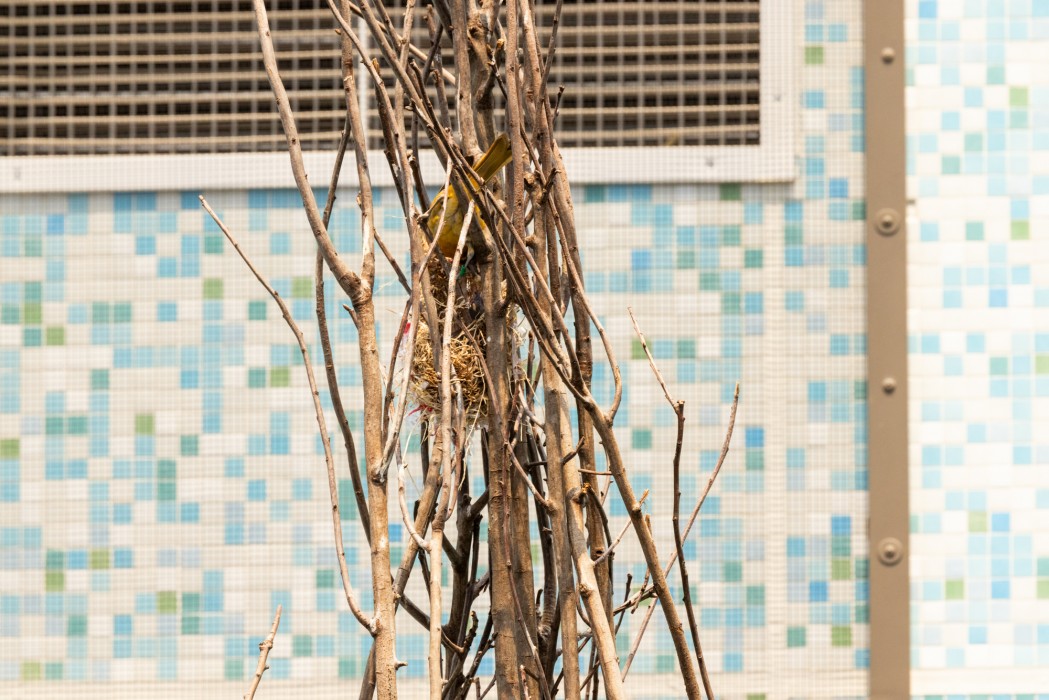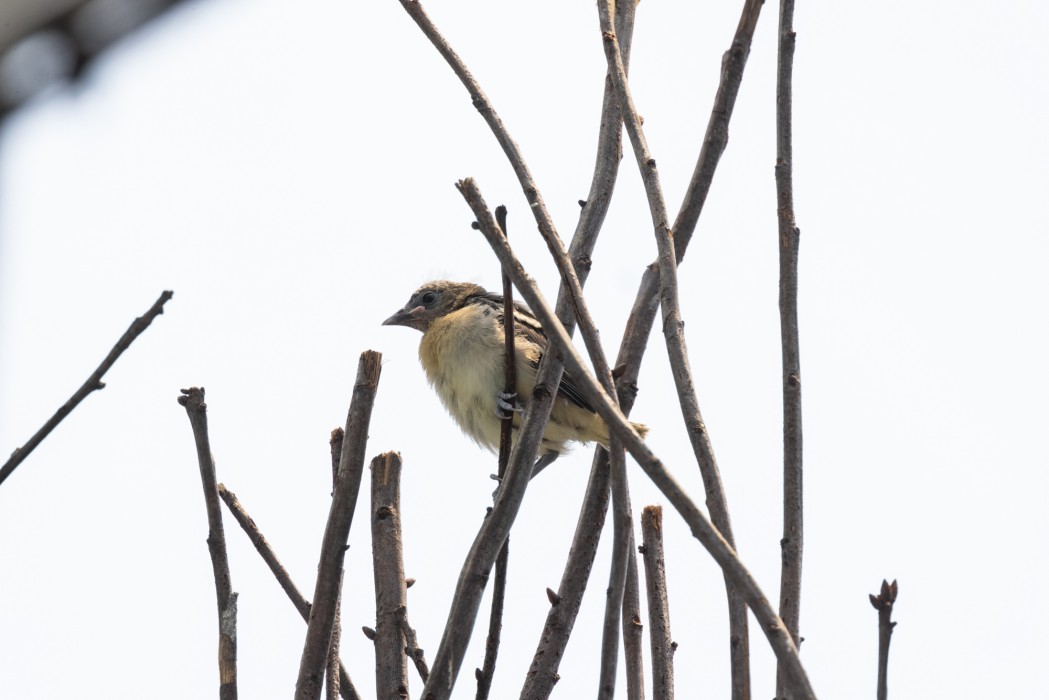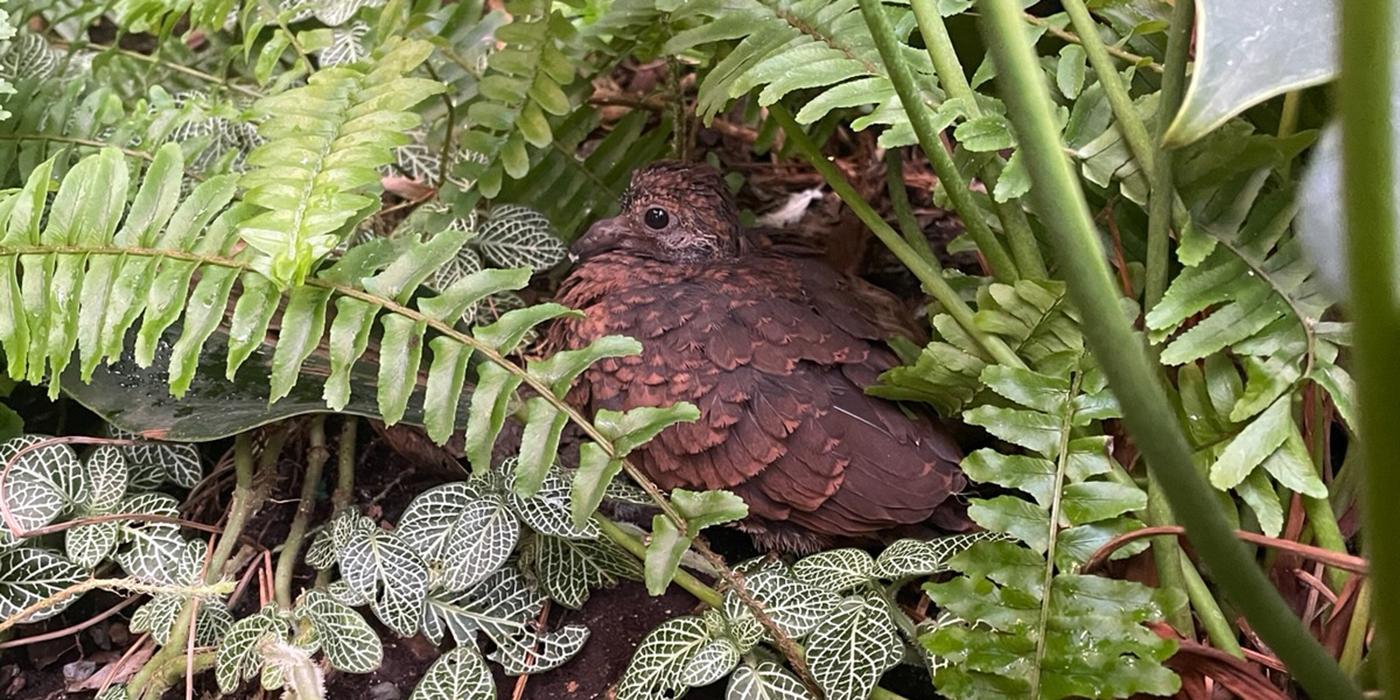Egg-citing News: Bird House Welcomes Oriole Chicks
Orchard Orioles
In June, the Smithsonian’s National Zoo and Conservation Biology Institute became the first facility in the world to successfully breed and hatch orchard orioles in human care! Closely related to the Baltimore oriole, the orchard oriole is the smallest of the eight oriole species found north of Mexico. They have independent, curious and easy-going personalities.
Our Bird House team received permits from the U.S. Fish and Wildlife Service to collect the adult orchard orioles from the wild in 2017 and 2019. Although we do not know their exact ages, we know they were adults at the time of collection based on the color of their plumage.
Unlike the brightly hued Baltimore oriole, male orchard orioles have deep chestnut markings on their stomach, shoulders and backsides. They are black everywhere else with white bars on their wings. Females and juvenile orchard orioles are olive green with yellowish stomachs and undersides.
While the Bird House was under construction, our male and female orchard oriole lived behind-the-scenes at the Zoo’s propagation center, where we have successfully bred many other songbirds, including wood thrush—the official bird of Washington, D.C.
Although the pair exhibited interest in breeding and nesting, it wasn’t until they moved in to the Bird House’s Bird Friendly Coffee Farm aviary that the pair successfully bred. We attribute their success to the height and size of the aviary, as they nested about 20 feet above the ground.
To “set the mood” for breeding, keepers provided the pair with a variety of nesting materials. The orchard orioles sought out raffia and shredded newspaper to build their nest. In late May, the female laid three dark brown eggs. She incubated them for about two weeks while the male brought her food.
Although all three eggs hatched in early June, only two of the chicks survived. Once they fledged, the parents were not as attentive, unfortunately. Any time we breed birds at the Zoo, keepers brainstorm for any contingency: will the eggs hatch? Will the parents be willing and able to raise the chicks? What if we need to hand-raise chicks? Thankfully, we've got a crackerjack crew of expert bird keepers up to the task and are always alert for anything amiss.
Keepers were prepared to step in. They hand-reared the chicks and fed them from 6 a.m. to 6 p.m.—every 90 minutes—until they started eating on their own. Thanks to our team’s efforts, those two chicks—now juveniles—are thriving.
Later this summer, a clutch of eggs from the male and another female yielded three additional chicks, which they raised entirely on their own. And, the first pair had a second clutch with two surviving chicks. Like their older siblings, these chicks were raised by keepers after they fledged. This brings our total number of orchard oriole offspring to seven!
Baltimore Oriole
This summer, Our Bird House team had even more to celebrate as we welcomed three Baltimore oriole chicks! This species, though not endangered, is incredibly significant to the Washington, D.C., area, as the state bird of Maryland. During spring and summer, it is common to see them in forests, fields and backyards in our region. This brilliantly colored orange and black songbird has a clear, flute-like whistle.
Males have a black head and back, and a bright, boldly colored orange breast and underparts. They also have black wings with orange bars and white trim. Females are less boldly colored, with olive-brown to orange coloration, and brown wings with white wing bars.
The chicks’ mother hatched here—at Smithsonian’s National Zoo and Conservation Biology Institute—in June 2020. Their father hatched that same month at Nashville Zoo. Zoo staff choose which animals to breed by considering their genetic makeup, health and temperament, among other factors. Like all Baltimore orioles, these two have very strong personalities and can be assertive, demanding and bossy at times!
Baltimore orioles are well-known for their basket-like nest, which usually hangs about 30 feet off the ground and is extremely strong. Like the orchard orioles, this pair chose to construct their nest out of raffia and shredded newspaper.
The couple bred in June, and the female laid four blue-gray eggs. All of the chicks hatched, though only three survived. Our Baltimore orioles were one of the first species to successfully breed in the Bird Friendly Coffee Farm aviary! The chicks fledged around 2 weeks of age, though their wings continued to grow for another 3 weeks. At only 5 weeks of age, Baltimore oriole chicks are capable of sustained flight.
I am happy to report that both parents helped feed and care for their offspring. They did a great job of raising their chicks!
What’s Next for the Chicks?
Although the orchard and Baltimore oriole chicks that hatched this summer will not be on exhibit here at the Zoo, they have an exciting future ahead. They will be going to other zoos accredited by the Association of Zoos and Aquariums, where they will serve as ambassadors for their species and, eventually, contribute to their species’ survival. Importantly, what our team has learned about breeding these species in human care can be applied to breeding rare and endangered orioles.
If you are planning a visit to the Bird House, you will find our adult Baltimore and orchard orioles in the Bird Friendly Coffee Farm aviary. They are active throughout the day and tend to spend time at the top of trees and at the nectar feeders.
About the Bird House
The innovative Bird House exhibit explores the fascinating world of migratory songbirds, waterfowl and shorebirds native to North, Central and South American ecosystems. Migratory birds play critical roles in pest control, pollination and seed dispersal for trees and plants as well as crops. Three aviaries—the Delaware Bay, a lush prairie pothole and a tropical Bird Friendly coffee farm—tell the story of how migratory birds connect communities and contribute to healthy ecosystems across the Americas.
As visitors “migrate” through the Bird House, free-flighted birds stride, paddle, tweet and fly all around them. These multi-sensory, immersive aviaries mimic natural ecosystems—places that are of critical importance to the annual life cycles of migratory birds and that boost human well-being. From this exhibit, visitors can learn seven simple actions to live bird friendly to protect native species—including orchard and Baltimore orioles—in their own backyards.
Meet our orioles and more songbirds at the Bird House! Get your free entry passes here. Want to learn more? Don’t miss How Do Birds Handle the Heat?

